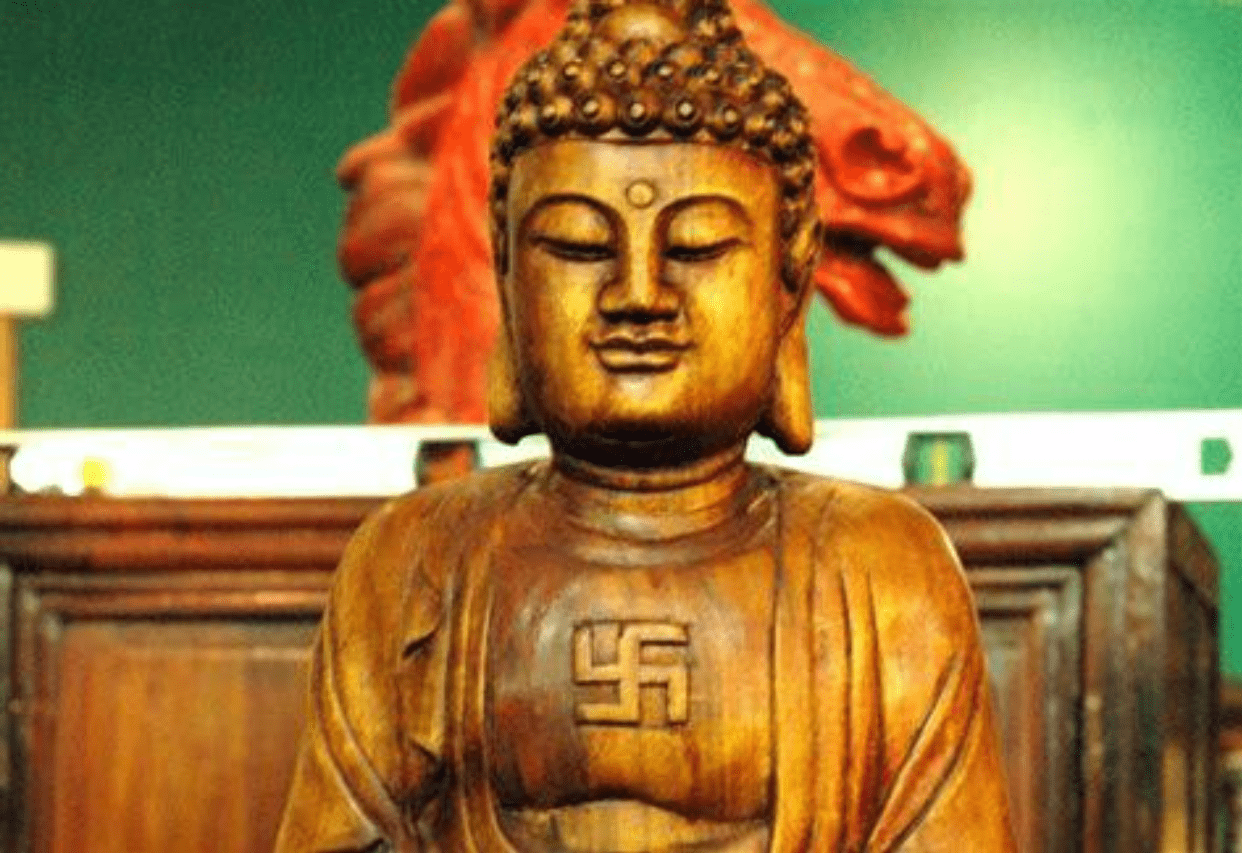In the 1920s, the Nazis culturally appropriated the age-old symbol of good fortune and turned it into an emblem of Aryan identity and German nationalism
As a long-time resident of Asia, I have often been approached by Western visitors who have seen the swastika on pagodas in Bangladesh, on Buddhas in Thailand, on decorative lanterns in Japan, on lawns in India, and elsewhere. One perplexed German asked me if the Nazi emblem, which is illegal in Germany, was still in use. Another Westerner said that Asians seem to support Nazism.
These fleeting perceptions could not be further from reality. In fact, many people in the West do not know where the swastika adopted by the Nazis came from. And to be honest, when I was a young backpacker exploring India, I was also taken aback by the sheer number of swastikas.
Behind the sinister motifs of ideology and war that characterize the 20th century lies a secret hidden in the disturbing emblems of Nazi Germany. These symbols, which have their roots in ancient times but have been corrupted into symbols of oppression and hatred, convey a terrifying picture of the establishment and rule of the Nazi regime. The swastika is the main expression of this menacing symbolism.
It’s an emblem that is nearly 7,000 years old and has roots in many different cultures, including the Greco-Roman and ancient Indus Valleys. But this innocent symbol was corrupted, turned 45 degrees, and made into a terrifying symbol of German nationalism and Aryan identity by Adolf Hitler and the Nazi Party. The swastika, which they formally adopted in 1920, became a symbol of terror and the extermination of people they regarded as sub-human.
From the tombs of early Christians to the catacombs of Rome and the Lalibela Rock Churches to the Cathedral of Cordoba, the original, genuine emblem was a sign of well-being and long life. “The motif appears to have first been used in Eurasia, as early as 7,000 years ago, perhaps representing the movement of the sun through the sky… as a symbol of wellbeing in ancient societies,” says the Holocaust Encyclopedia.
A term for well-being, prosperity, or good fortune, the word “swastika” is derived from the Sanskrit roots “su” (good) and “asti” (to prevail). The oldest Hindu scriptures, the “Rig Veda,” contain references to this word in their prayers. The four “yugas,” or cyclical times, the four stages of life, the four “Vedas,” and other things that come in fours are all thought to be represented by it in Hindu philosophy. In some regions of India, Swastika is also used as a girl’s name.
In Buddhism, the symbol denotes the footsteps of the Buddha; it is also known as the “manji” in Japanese.
This symbol represents a spiritual teacher to adherents of the ancient Indian religion of Jainism, who follow a vegetarian diet, believe in reincarnation, and think that all living things, including humans and animals, have souls.
In India, the symbol is also interpreted as a clockwise representation of the sun god. It is commonly rendered in turmeric and used as a welcome sign on store doors, thresholds, vehicles, and letterheads. It is presented during weddings and other joyous events, when a new house is dedicated, when the fiscal year begins, when a new business is launched, and so on.
The discovery of swastikas in the ruins of Troy by archaeologist Heinrich Schliemann established a connection between the symbol and prehistoric Indo-European cultures.
The Nazis also appropriated runes, ancient alphabetic symbols used by Germanic tribes long before the introduction of the Latin alphabet, to create powerful and evocative iconography that would connect to an idealized Aryan past and lend legitimacy to their master race ideology.
The Nazis employed a number of symbols, however, the most well-known and frequently misused was the Swastika. Another is the “Totenkopf,” or “Death’s Head.” The skull was first worn on fur hats by Hungarian cavalrymen in the 16th century, then by Polish cavalrymen, and in the 18th century by Prussian cavalrymen. They adopted it because the hall in which the body of their King Friedrich Wilhelm lay on his parade bed in 1740 was decorated with white embroidered skulls. In Hitler’s SS it took on a new, terrifying meaning and signified unswerving allegiance to the deadly end.
The Blutfahne or blood flag was stained with the blood of Nazi supporters during the failed beer hall putsch in Munich in 1923. It became a revered artifact that symbolized martyrdom and unity within the Nazi movement.
Even the Nazi uniforms, created by designers such as Hugo Boss, had to possess a terrifying grace. These uniforms were meant to exude strength, discipline, and dominance with their vivid colors, crisp lines, and menacing emblems.
Victor Klemperer, a Jewish scholar who survived the Holocaust made a chilling reflection that mirrors the insidious nature of symbol and propaganda in the Nazi apparatus:
“Words can be like tiny doses of arsenic: they are swallowed unnoticed, appear to have no effect, and then after a little time, the toxic reaction sets in after all.”
The history of the swastika is as complex as its design, and it still arouses strong feelings in people today. But this time-honored symbol needs to be freed from its sinister legacy. It is important to recognize that the history of the swastika began thousands of years before the Nazi dictatorship, spanning continents and cultures, and did not begin in the 20th century.
The original swastika should live on in the minds of current and future Western generations as a symbol of happiness and prosperity. However, the problematic evolution of the swastika from a symbol of goodwill to a symbol of tyranny should remain a stark reminder of how symbols can be repurposed and reinterpreted over time.

